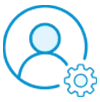We're open through the holidays to support your upskilling goals — Which training do you want to book?
We're open through the holidays to support your upskilling goals — Which training do you want to book?
Unable to find what you're searching for?
We're here to help you find itChange Technology



Unit Testing is a fundamental software testing technique that ensures individual components or units of code function as expected. It is a crucial part of the software development lifecycle (SDLC), enabling developers to detect and fix bugs at an early stage. By validating small, independent units of software, Unit Testing improves code quality, reliability, and maintainability while reducing costly errors in later stages.
Many organizations integrate automated Unit Testing into their DevOps and CI/CD pipelines to streamline development and enhance software performance. Popular Unit Testing frameworks include JUnit (Java), NUnit (.NET), PyTest (Python), and Mocha (JavaScript), widely used across industries. Major tech companies like Google, Microsoft, Amazon, and Facebook leverage Unit Testing to ensure robust application development.
Mastering Unit Testing helps developers write efficient, bug-free code and enhances their ability to work in agile and test-driven development (TDD) environments. Whether you're a beginner or an experienced developer, learning Unit Testing best practices is essential for building scalable and maintainable software solutions.

Clear All
Filter
Clear All
Clear All
Clear All
*Excluding VAT and GST
Showing to of entries
Unit Testing originated in the early days of software development when programmers manually tested small code blocks to ensure functionality. The concept gained momentum with the rise of structured programming in the 1970s and 1980s, leading to the adoption of systematic testing methodologies.
In the late 1990s, Test-Driven Development (TDD) revolutionized the approach to Unit Testing, emphasizing writing test cases before developing actual code. This practice, pioneered by Kent Beck as part of Extreme Programming (XP), significantly improved software quality and maintainability.
Over time, the introduction of automated Unit Testing frameworks like JUnit (1997), NUnit (2000), and PyTest (2003) accelerated the adoption of Unit Testing across industries. Today, with the rise of CI/CD, DevOps, and Agile methodologies, Unit Testing has become an integral part of modern software development, ensuring faster releases and improved software stability.
The landscape of Unit Testing is evolving rapidly, driven by advancements in AI, automation, and DevOps practices. One major trend is the integration of AI-powered testing tools, which optimize test case generation and automate bug detection, reducing manual effort.
Another significant shift is the widespread adoption of shift-left testing, where developers conduct Unit Testing earlier in the software development lifecycle to identify defects sooner. This approach aligns with Agile and DevOps methodologies, ensuring continuous integration and deployment.
Cloud-based testing platforms are also gaining traction, enabling distributed teams to execute Unit Tests in scalable environments. Additionally, frameworks like JUnit 5, Mocha.js, and Google Test continue to evolve, offering enhanced functionality for modern application development.
With the rise of microservices, containerization (Docker, Kubernetes), and serverless computing, Unit Testing frameworks are adapting to validate complex architectures, ensuring software reliability in dynamic environments.
Ans - No, the published fee includes all applicable taxes.



